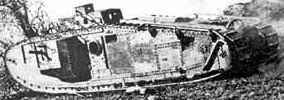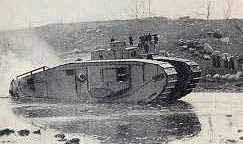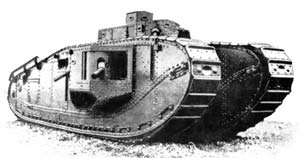Armoured Vehicle Museum >>
|
|||||||||||||||
American involvement in the development of the tank design led to the Mark VIII, also known as 'Liberty' or Anglo-American tank (though initially the French were partially involved). The engine was compartmentalised from the crew, and the turret structure included forward and rear firing machine guns. Of a planned (shared production) of 1,500 each, 24 were built by the British before they pulled out of the project and 100 completed by the Americans. The 100 were produced between September 1918 - 1920, at the Rock Island Arsenal, at a cost of $35,000 apiece ($430,000 in 2006). They were used and upgraded until the 1930s when given to Canada for training (as opposed to the M1917's which were sold at scrap value). The tank itself was over 34 feet long, and there had been an even longer 44 foot version planned but never made (the Mark VIII*). The tank was outdated by the 1930s due to its speed (under 6 mph) and armour (16 - 6 mm) but it did have one of the longest independent trench crossing capabilities of any armoured fighting vehicle (AFV) ever made. Modern main battle tanks and AFVs rely on bridge laying tanks for crossing large deep trenches.
|
|
||||||||||||||






